Of Emus and Fairy-wrens
Photographing Australia’s Endemic Birds
Monthly Newsletter
June 2007
With some cool temperatures including record lows for several places in the Northern Territory and a shocking amount of rain, June was another month with lots of strange weather. While the weather itself wasn’t bad for photographing, it did have a few consequences for me. With late rains, the Top End was still extremely wet which meant that the water birds of Kakadu National Park and some of the other wetlands were still very spread out and hard to find at times. Many of the parrots and finches that have typical drinking sites were difficult to find because water was plentiful. Let me tell you, it made for a weird experience after spending most of the year in the drought in the southeast.
While water in the Top End was disappointing, by the time I got down to the center around Alice Springs, the water was a wonderful thing. The East MacDonnell Ranges were spectacular because several of the gorges had small pools of water where birds such as Budgerigars and Painted and Zebra Finches were coming in to drink regularly. At one pool, I had a flock of well over 1,000 Budgerigars descend onto the pool where I was patiently waiting right at sunrise. It was a spectacle that I never thought I would experience, as the air was just a blur of iridescent green.
I am getting ahead of myself though, last I wrote I had just crossed into the Northern Territory and was continuing my search for some of the rarer finches. To my surprise, I found and photographed both the Yellow-rumped Mannikin and the truly spectacular Gouldian Finches early in the month as I made my way to Katherine. From there I headed up to Darwin for a week or so where I spent some time looking for Chestnut Rail and White-browed Crake but came up empty on both birds. This was the beginning of the change in my luck. I never found those two birds and missed several others this month including the Hooded Parrot and White-throated Grasswren, two more endemics to the Top End.
After a week in the rather young but historic city of Darwin, I moved off to world-renowned Kakadu National Park. This park is known for its Aboriginal culture as well as its extensive wetlands. As I mentioned earlier, the wetlands were still extremely wet so the birds weren’t concentrated to a few remaining pools like they are late in the dry season. Despite this, the sheer number and diversity of birds was quite impressive and I really enjoyed the time I spent exploring the park. If you are ever visiting, a Yellow Waters Cruise is a must.
I left Kakadu in the middle of the month and began my trip south into the Centre. I must admit, I took my time and made quite a few detours, including one across the Barkly Tablelands with the hopes of seeing the enigmatic Flock Bronzewing. These pigeons can be difficult to find as they are nomadic but more often than not, if you see one, you see a ton. I was very pleased to find a small flock of about 50 but I have heard reports of 100,000 or more in a single flock. Talk about a site to see.
As I made it into the Center, I spent some time in Alice Springs and then headed out into the East MacDonnell Ranges. As I mentioned, recent rains has made this area flush with vegetation and birds making for a nice visit. The Budgerigars were the highlight by far but I also met some wonderful people and really enjoyed my time there.
Next month I will be visiting the West MacDonnell Ranges, Uluru and Kata Tjuta and then be heading back to Sydney where I will wrap things up and get on my flight back to the United States. I can’t believe the year is about over but it should be an exciting final month as well!
Website Announcements
As usual, I have completed updated my galleries and weblogs. Hope you enjoy them and there will be more to come throughout July!
The Photos
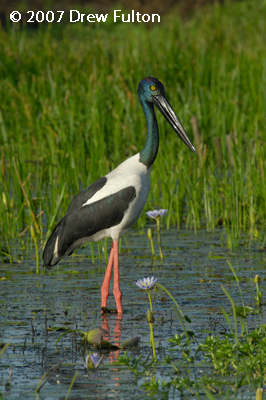
Jabiru – Fogg Dam, Northern Territory
The Jabiru is one of the most beautiful storks I have ever seen. I had a professor that once liken the stork family to “grumpy old men” and it describes North America’s Wood Stork quite well but the Jabiru or Black-necked Stork is quite a beautiful bird. I love the green iridescence of the head and the bright red legs.

Gouldian Finch – Campbell Springs, Northern Territory
It isn’t hard to imagine why there is such a high demand for these birds as pets that illegal capture has helped to drive this bird onto the Endangered Species List. The Gouldians are recovering quite nicely I hear and I saw them in several different sites but this was the only time I could really get some good photos of a bright male. The birds have several color morphs other than this one including red-faced and golden-faced birds. I did see a handful of red-faced birds but never saw the golden-faced bird.
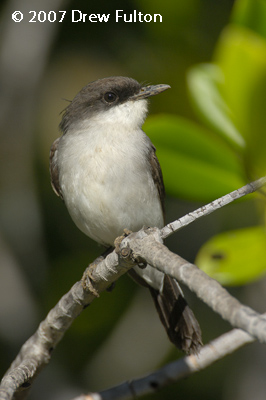
Mangrove Robin – Tiger Brennan Drive, Darwin, Northern Territory
Darwin is well known for its variety of tropical birds that live in the mangroves along the coast. For birders, these are often difficult birds to see as mangroves are not an easily accessed habitat with their complex root systems and deep mud making walking difficult, not to mention the biting insects that thrive there. Despite this, Darwin does have a few rather easily accessible spots and I found this particular bird just outside of downtown Darwin. I had seen a Mangrove Robin once before in Queensland but hadn’t gotten any photos so was quite pleased with this shot.
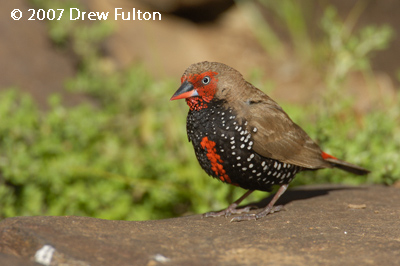
Painted Finch – N’Dhala Gorge Nature Park, East MacDonnell Ranges, Northern Territory
These small yet beautiful birds were quite common in the East MacDonnell Ranges while I was there. I was able to photograph a pair that was coming in to drink at a waterhole in N’Dhala Gorge with hundreds of Zebra Finches and Budgerigars. I am not sure what it is about them, but I think they are one of my favorite Australian finches.
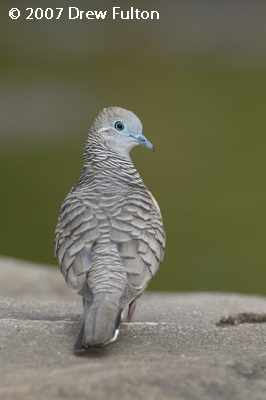
Peaceful Dove – Campbell Springs, Northern Territory
Peaceful Doves are quite common throughout Australia yet I really love this image. It is a different view than most photographs out there and shows the beautifully scalloped back of these small doves. The blue around the eye and face is so soft yet grabs your eye.
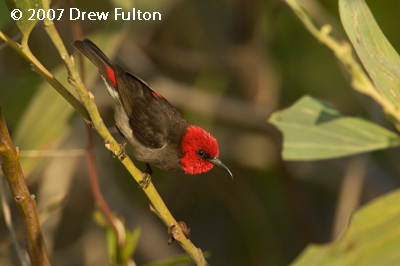
Red-headed Honeyeater – Palmerston Sewage Works, Palmerston, Northen Territory
The Red-headed Honeyeater is another bird of the mangroves and they were fairly common behind the sewage plant in Palmerston. Again, I had seen this bird before but didn’t have and photographs so I was quite pleased when this one came out on the edge of the forest for a few moments in nice morning light.
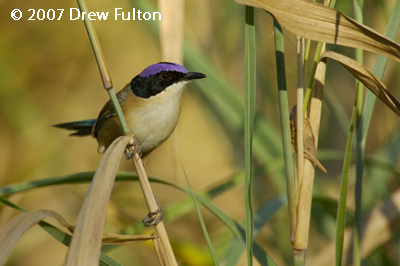
Purple-crowned Fairywren – Victoria River, Gregory National Park, Northern Territory
There aren’t many birds with that shade of purple anywhere in their plumage but these birds sure have a brilliant purple crown.
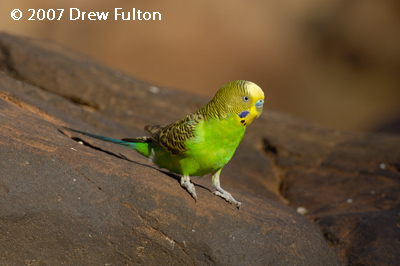
Budgerigar – N’Dhala Gorge, East MacDonnell Ranges, Northern Territory
Imagine over 1,000 of these birds descending simultaneously on a water hole just a few meters across. It was one of the most extravagant and beautiful events I have ever witnessed and it was nearly impossible to capture on film. A wide angle lens or a video camera might have captured a small aspect of it but I don’t believe it would ever do it justice. It was one of those experiences that I will never forget.
Until next month be sure to check out the website as it has just been fully updated!
